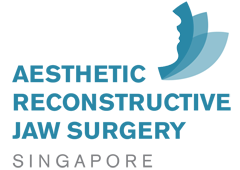Share this
What is the right age for cosmetic jaw surgery?
on March 19, 2015

In most children, the lower jaw is usually shorter than the upper jaw, what dentists call a Class II jaw relation. As a child grows, the growth of the lower jaw catches up and by the age of 12, most would have established a Class I jaw relationship, where the lower jaw is only slightly behind the upper jaw. However, for some children, the growth does not catch up proportionally and the jaws remain in a Class II position. Others, on the other hand, has excessive growth of the lower jaw, resulting in the lower jaw protruding beyond the upper jaw, resulting in a Class III jaw relation.
For this group of pre-pubescent patients, surgery is not warranted, at least not yet. If parents spot such growth discrepancies at this early stage, roughly from kindergarten to upper primary school, an orthodontist should be consulted for an assessment to see if growth modification appliances can be used. For some children, that may be all that is needed. Certainly, no cosmetic jaw surgery should be attempted at this stage. Children this age is usually not as conscious of their appearance, their bodies are still growing, and they are mentally not mature enough.
Once the child reaches adolescence, there will be a growth spurt. For Class II jaws, this growth spurt may push the growth of the lower jaw into a normal Class I position. However, this pubertal growth spurt is a double-edged sword as it can also push the lower jaw excessively into a Class III position or make a pre-existing Class III jaw even worse. Timing of cosmetic jaw surgery varies according to the type of jaw relations and the sex of the patient.
Girls generally matured physiologically earlier than boys. Most girls would have completed more than 95% of their growth within one year after their first menstrual period. As such, from the physical development point of view, it is feasbile for girls to undergo surgery earlier than boys. The other factor to consider is the emotional maturity which may differ much more widely. If the patient, her parents and the surgeon are satisfied that there is enough mental maturity, surgery can be done during teenage years. Girls are also more concern about physical appearances at a younger age and having a signficant dentofacial deformity may affect their self esteem. For this group of patients, early surgery, at 15 or 16 years of age, may be beneficial to their psychological development. However, as a matter of routine, in SIngapore, most surgery is done after the age of 18 years.
Boys tend to grow a bit slower but the growth phase is spread out over a longer period of time. In general, cosmetic jaw surgery for boys should not be done before 18 years of age. If there are signs of incomplete growth, surgery should be delayed till early twenties. While studies have been done using bone scans and hand-wrist radiographs to determine skeletal maturity, there are wide enough variations in results that suggest that we cannot totally rely on them. A combination of factors such as comparison of serial dental records such as dental casts and x-rays of the skull and jaws will give an idea on the cessation of growth. Genetics play a big role as well. If the parents are tall and the child is short, chances are he still has some growth left. There is no hard and fast rules to go by, just comparison of serial records and good old common sense.
The type of growth discrepancies also matter in deciding the timing of surgery. In general, deformities due to growth deficiency of the lower jaw, ie the Class II jaw relation, may be corrected earlier. This deformity indicates a reduced growth potential and incidences of any sudden spurt in growth later are rare. Deformities due to excessive growh, ie Class III jaw relation, on the other hand, should be given time to run its course as the growth center tend to remain active longer. Asymmetry cases should also not be done early. Facial asymmetry is often due to a hyperactive growth centre on one side of the lower jaw. This active side pushes the lower jaw downwards and forwards, causing the chin to deviate to the opposite side. The upper jaw will grow accordingly to maintain the bite of the teeth, This results in excessive growth on one side of the face. giving it a crooked look. Such facial asymmetry should be monitored till it reach a plateau before surgery is done to minimize the chances of relapse due to incomplete growth.
Cosmetic jaw surgery is a fairly invasive procedure and should be approached with caution. While it may be possible and maybe even desirable for some patients to undergo surgery at a younger age, those are the exception rather than the norm. For the majority, it is best to allow time for both physical and psychological maturity to develop.
Share this
- Jaw Surgery (93)
- Dental Implants Singapore (90)
- Orthognathic Surgery (48)
- Replacing Missing Teeth (26)
- Missing Teeth Options (23)
- Underbite (23)
- Bone Grafting (21)
- Costs (18)
- Facial Aesthetics (18)
- Aesthetics (17)
- dental implants (16)
- corrective jaw surgery (15)
- BOTOX (11)
- Dermal Fillers (11)
- Wisdom teeth (10)
- Fixed Implant Dentures (8)
- Loose Dentures Singapore (6)
- Medisave (6)
- sleep apnea (6)
- Braces (5)
- Dental Pain (5)
- Dentures in Singapore (5)
- Loose Teeth (5)
- Tooth Extraction (5)
- jaw deformities (5)
- bimax (4)
- bone graft (4)
- maxillomandibular advancement (4)
- all-on-4 (3)
- bimaxillary protrusion (3)
- chin implant (3)
- facial asymmetry (3)
- full mouth dental implants (3)
- genioplasty (3)
- immediate implant (3)
- removal of an integrated dental implant (3)
- third molars (3)
- wisdom tooth surgery (3)
- My Dentures Don't Fit (2)
- VME (2)
- bone graft healing (2)
- distraction osteogenesis (2)
- medical tourism (2)
- obstructive sleep apnea (2)
- orthodontics (2)
- plastic surgery (2)
- CT guided dental implants (1)
- Double jaw surgery (1)
- Invisalign (1)
- Periodontal Disease (1)
- Permanent Dentures Singapore (1)
- before and after photos (1)
- facial trauma (1)
- fractured dental implant (1)
- oral appliance therapy (1)
- root canal treatment (1)
- veneers (1)
- vertical maxillary excess (1)
- September 2019 (2)
- July 2019 (2)
- May 2019 (2)
- August 2018 (1)
- October 2017 (1)
- September 2017 (2)
- August 2017 (1)
- June 2017 (2)
- May 2017 (4)
- April 2017 (1)
- March 2017 (1)
- February 2017 (3)
- January 2017 (3)
- December 2016 (1)
- November 2016 (2)
- October 2016 (4)
- September 2016 (9)
- August 2016 (5)
- July 2016 (11)
- June 2016 (14)
- May 2016 (6)
- April 2016 (2)
- March 2016 (1)
- January 2016 (7)
- December 2015 (10)
- November 2015 (4)
- October 2015 (9)
- September 2015 (7)
- August 2015 (1)
- July 2015 (6)
- June 2015 (3)
- May 2015 (7)
- April 2015 (5)
- March 2015 (8)
- January 2015 (5)
- December 2014 (7)
- November 2014 (7)
- October 2014 (6)
- September 2014 (8)
- August 2014 (5)
- July 2014 (7)
- June 2014 (8)
- May 2014 (9)
- April 2014 (10)
- March 2014 (6)
- February 2014 (8)
- January 2014 (3)
Subscribe by email
Email subscription




No Comments Yet
Let us know what you think